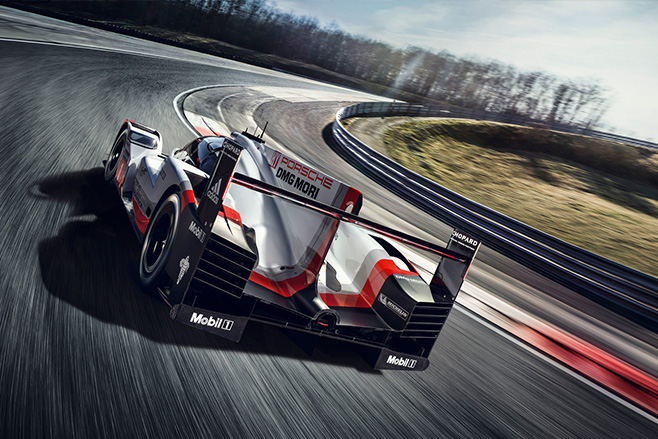
Porsche has announced it will return to racing in the top class at Le Mans in 2023. It will be the first time Porsche has fought for overall victory at the 24 Hour race since it pulled out of the LMP1 class in 2017.
What class will Porsche race in?
It had been rumoured that Porsche would enter the hotly anticipated Hypercar class, but it will in fact compete in the new LMDh (Le Mans Daytona hybrid) class, which is being introduced in both the FIA World Endurance Championship (WEC) and IMSA series in North America.
That’s a class for prototype race cars with hybrid powertrains. The cars will weigh around 1000kg and turn out around 670bhp. Balance of Performance regulations will ensure they can fight for overall victory alongside the Hypercars. Both new classes come into effect next year.

The LMDh class has been created in collaboration between the WEC and IMSA to allow the same types of car to race for victory in major endurance race classics all over the world – handy for marketing the Porsche brand globally.
The sheer costs involved drove Porsche out of the LMP1 class last time, but it’s confident the new LMDh formula is more sustainable.
The greatest cars to ever win Le Mans
Why did Porsche choose LMDh instead of Hypercar?
“It’s much more cost-efficient than Hypercar,” Porsche’s director of factory motorsport Pascal Zurlinden told us. “IMSA and WEC are working for the closest possible racing.”
Porsche’s overall CEO Oliver Blume has said: “The new LMDh category allows us to fight for overall victories with a hybrid system at the Le Mans, Daytona and Sebring classics – without breaking the bank. The project is extremely attractive for Porsche.”

Why is LMDh cheaper to race in than LMP1?
Partly because it uses some ‘spec’ components, notably the control electronics for the hybrid powertrain. The chassis, too, won’t be made by Porsche: a choice of four racing car specialist manufacturers will supply chassis to companies entering the LMDh class. The chassis are based on upgraded LMP2 designs.
Porsche will supply its own combustion engine and design the body (said to take its design cues from some of the ‘unseen’ concepts recently revealed by Porsche’s design studio) but regulations tightly control the amount of engineering freedom they’ll have.
“It’s really cost-effective; with BOP [Balance of Performance] you can’t buy performance,” Zurlinden says. “[The use of] some spec parts is an important factor to reduce costs. Depending on how the class is received, we could go back to the ’80s and ’90s with lots of manufacturers [involved]. And with lots of customer cars in the mix too, this could become really big.”
Who will Porsche be racing against?
In the LMDh class, the big gun is Audi. Porsche and Audi (both part of the VW Group empire) last squared up against each other at Le Mans in 2016.

In the Hypercar class, Toyota will field its GR Super Sport and Glickenhaus its 007 model from 2021, and Peugeot will join in 2022.
While it hasn’t raced in the headline class at Le Mans since withdrawing from LMP1, Porsche has maintained a works presence in the closely fought GTE category with its 911 RSR.
Zurlinden says the Porsche works team will remain committed to that class for next season.
This story was originally published at carmagazine.co.uk
Porsche Unseen prototype pics show what might have been



